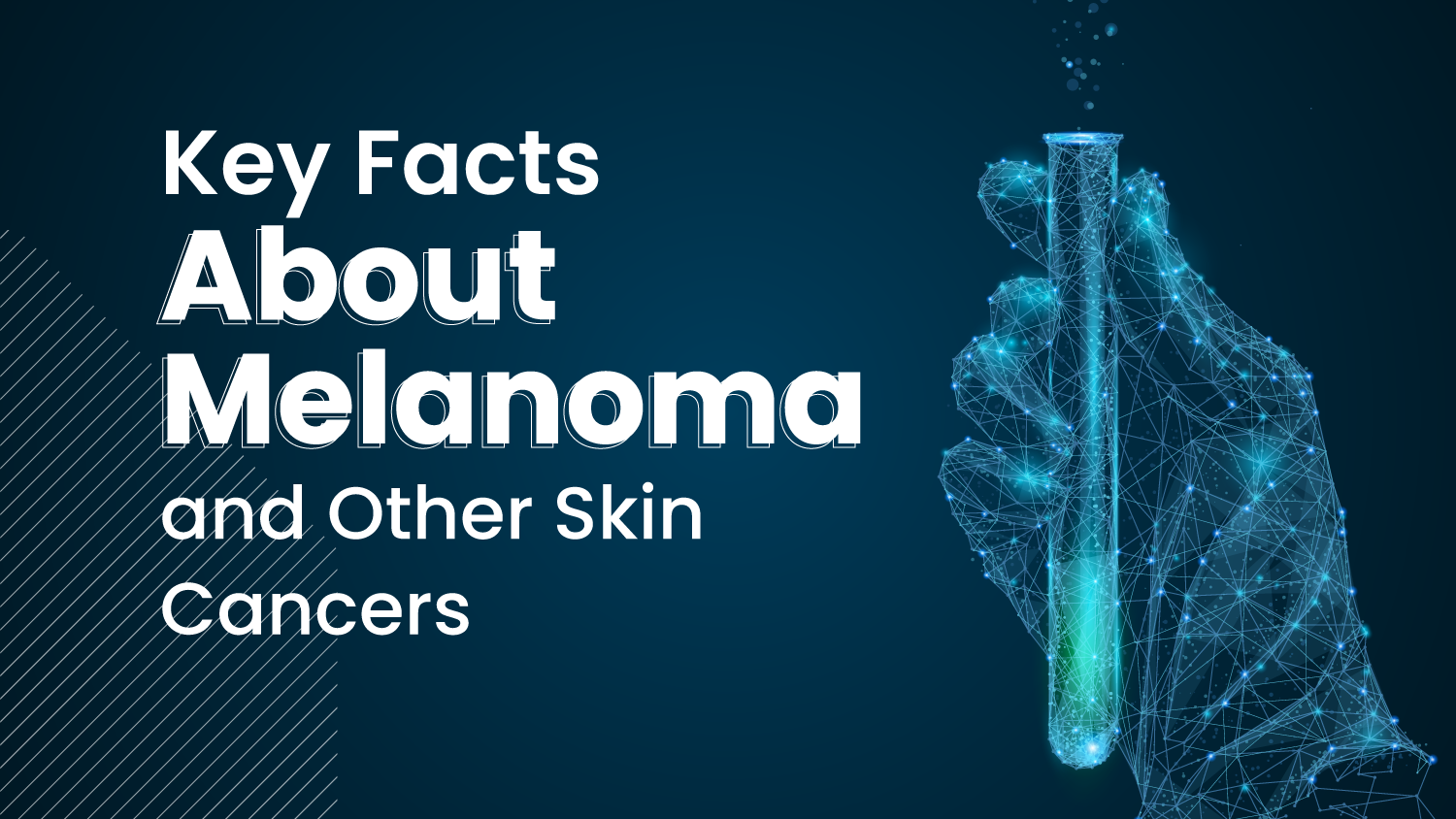Key Facts About Melanoma and Other Skin Cancers
2022.10.19

Skin cancer is the most common form of cancer in the United States. Skin cancers can occur on normal skin without warning or develop from a pre-existing mole. The primary cause of skin cancer is exposure to ultra-violet (UV) light from the sun, which damages the DNA of skin cells. Massive Bio co-founder and Chief Medical Officer Arturo Loaiza-Bonilla, MD, answered questions about melanoma and other forms of skin cancer.
What Is Skin Cancer and How Does It Develop?
Skin cancer is the most common type of cancer. It develops with DNA damages leading to the uncontrolled growth of malignant skin cells. Skin cancer is seen in areas where the sun’s rays are most in contact, such as the face, neck, arms, legs, ears, neck, and hands, however it occasionally can appear on areas non exposed to UV light. Although it is the most common type of cancer, many cases can be found early which improves the outcomes.
What Are the Symptoms?
Basal cell cancers usually manifest as hard, grouped sores in sun-exposed areas. Sometimes dandruff, peeling, and opening can be seen in those lesions, which grow very slowly, increase in size over time, and change color. Squamous cell cancer manifests with raised bumps in open areas such as the face, neck, ears, lips, and hands. In a short time, the lesions enlarge, their shape changes, and they turn into open wounds. Melanoma of the skin can be seen as enlarging pigmented lesions that can grow in lenght and/or depth over time.
What Are the Types of Skin Cancer?
There are three types of skin cancer: basal cell cancer, squamous cell cancer, and malignant melanoma. While some types of skin cancer are easy to treat, others can be life-threatening.
- Basal cell cancer: A type of cancer seen in the basal cells in the uppermost layer of the skin. It is the most common type of skin cancer. Basal cell cancer mainly occurs on areas of the skin that are exposed to the sun.
- Squamous cell cancer: Squamous cell cancer shows similar features to basal cell cancer. The difference between the two is that squamous cell cancer develops in the squamous cells that form the middle and outer layers of the skin. It is mainly seen on the face, scalp, neck, and hands exposed to UV rays. However, it can also occur in areas of the body that are not exposed to the sun.
- Malignant melanoma: Melanoma is the most dangerous and rarest type of skin cancer. It is seen as a result of uncontrolled proliferation of melanocyte cells that give color to the skin. Genetic predisposition and exposure to UV rays are the causes of the disease. If left untreated, it can spread throughout the body. Melanoma can be seen as black, brown, blue, or purple spots on any body part.
Risk Factors for Skin Cancer
Risk factors that may be responsible for the development of skin cancer include:
- Having fair skin, red hair, or freckles
- Having a family and personal history of skin cancer
- Long-term exposure to UV rays from the sun or sources such as tanning salons
- Frequent sunburns
- Having many moles on the body
- Having a weak immune system
- Exposure to intense radiation or toxic chemicals for a long time
- Non-healing open wounds
- Smoking
- Advancing age
- Having had an organ transplant
- Certain skin diseases and drugs used in the treatment of these diseases
How Is Skin Cancer Diagnosed?
Skin cancer is typically diagnosed by a physician known as a dermatologist. When skin cancer is suspected, a skin biopsy is taken from the suspicious area and sent to a lab for pathological examination. A treatment plan is made according to the pathology results.
How Is Skin Cancer Treated?
The most effective treatment method for basal and squamous cell cancers is surgery. The goal of surgery is to remove the tumor, plus a small amount of tissue surrounding it in order to prevent recurrence. For squamous cell tumors, radiotherapy or chemotherapy may also be recommended, depending on the extent of the tumor. The treatment of malignant melanoma differs from the other two types of cancer. Chemotherapy or immunotherapy may be necessary after surgery, depending on the stage of the tumor and whether it has spread (or metastasized) to other parts of the body.
There have been two melanoma treatment breakthroughs in recent years. First, a new class of drugs called targeted therapies has become available as a treatment for metastatic melanoma. These drugs are designed to identify and attack cancer cells that have certain genetic alterations (BRAF mutations). Likewise, immunotherapy is a form of treatment that bolsters the body’s natural defense network to help it kill cancer cells. Scientists are currently studying even more new medicines for treating metastatic melanoma in clinical trials.
Learning that you have melanoma can be upsetting and scary, but putting your treatment plan into action can help you regain a sense of confidence and calm. Your doctor will discuss your melanoma treatment options, and what’s right for you will depend on a variety of factors, including your age, general health, and the results of specific tests. Massive Bio provides a fast, easy, and free way to find clinical trials that will give you access to new melanoma treatment options. With our unique clinical trial matching system, Massive Bio can quickly match you to clinical trials of metastatic melanoma treatments. Contact us to see if there is a suitable clinical trial for your melanoma.
Recent In Massive Bio

Massive Bio’s Co-Founder Dr. Arturo Loaiza-Bonilla Participates in Europe’s Leading Health Tech Event
2023.12.05

Further Group Collaborates with Massive Bio, Integrating Health Solutions for the Insurance Industry to Boost Access to Cancer Clinical Trials Globally
2023.12.05

Massive Bio and Health in Code Collaborate to Enhance Personalized Oncology Treatment Through Advanced Genomic Testing
2023.12.05

Massive Bio and ONCOassist® Announce Strategic Partnership at ESMO 2023
2023.12.05

Cagatay Culcuoglu, Co-Founder of Massive Bio, to Speak at ‘Innovation in Oncology’ Event
2023.12.05
